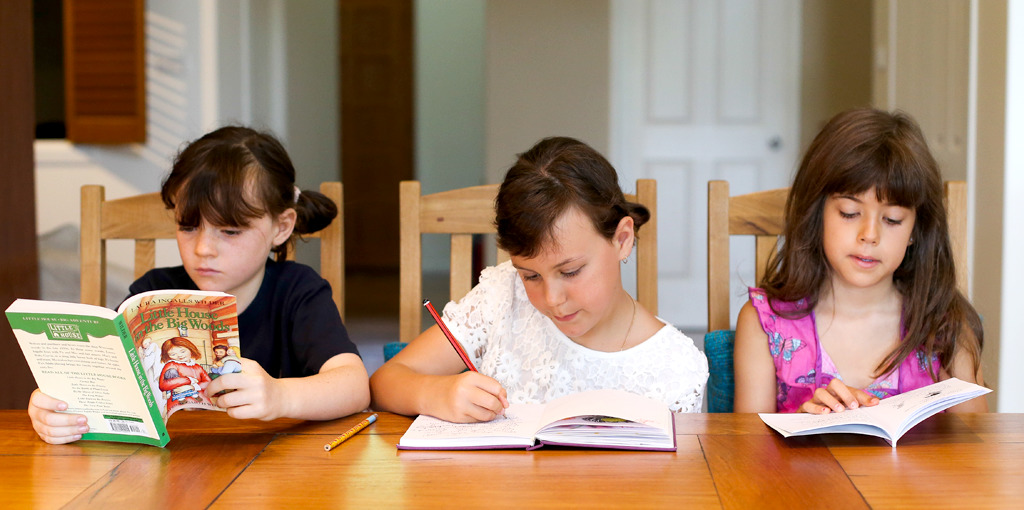Competition or connection: What are students really learning?

Competition or connection: What are students really learning?
In classrooms today we witness first hand the enormous impact that competition has on children’s behaviour. Children feel constant angst and anxiety when placed in competition and compared with others. The classroom becomes a place where children put their need to win beyond the joy of playing and connecting through learning.
Competition in everyday life is often seen as harmless fun, and even as a good thing. We often use the phrase ‘healthy competition’, but how 'healthy' is it? What if children are receiving another message from the pressure of ‘winning and striving to be the best’, that has a significant impact on their wellbeing?
A primary school teacher shares her classroom experience of the impact of competition on children’s behaviour and learning:
During maths, two boys were sitting together joyfully engaging in the lesson. They looked at each other and laughed when the maths problem was called out. Both boys got to work on solving the problem together, listening to one another, sharing the equipment and writing the answers without a fuss. You could see the love they both had for each other, for learning, and in particular, maths work.
When the lesson finished the boys went outside for their break and played a game of footy. They were on opposing teams. On their return there was a tangible difference in how these two boys related to each other. When the next math question was read out it was clear that the boys had disengaged from each other; the connection they had before the break had been lost.
What happened during the footy game to destroy the connection the boys shared in the Math lesson? Was it because they were pitted against each other? Was it the competition?
In a competitive situation someone always loses – you cannot have a ‘winner’ without having a ‘loser’. And I have seen over and over again how winning and losing can undermine a child’s perception of their self-worth and their natural way of relating to others equally.
The feeling of equal-ness between them when they were learning had been eradicated when the drive of winning a game became the focus. The whole dynamic of learning had changed when competition came into the picture. This left the winners feeling ‘powerful’ but others feeling disempowered and left behind.
When competition was put into play the boys were no longer mates but became threats to each other. As in the footy game, when there is competition in the classroom there is a constant angst to be on top and to beat your classmates.
In the case of these two boys their connection was so powerful at first that they valued one another and what they brought to the lesson. Their spontaneous giggles and sheer delight in learning naturally supported the skills and understandings they equally shared with each other. There was no room for competition, only cooperation and joint discussions to explore and learn.
Competition is based on the drive for personal gain at the expense of another and this can only destroy true relationship amongst children.
What are we doing to our children when we encourage them to be divided against, and disconnected from, each other? How did we come to accept competition as the norm?
What would happen if co-operation were the norm?
We would have an environment where:
-
everyone is valued for what they bring to the room
-
learning is based on working together – each student is nurtured and naturally learns to support others
-
time is provided for children to learn at their pace and support is available wherever needed
-
everyone can commit and be more responsible for their actions, inactions, learning and impact upon the group
-
students are encouraged to lead by sharing skills, concepts and understanding they have mastered
-
learning comes from joint discussions – everyone is encouraged to speak and contribute
-
no one is left behind or judged for what they may still have to learn
In the co-operative classroom, students are asked to shine from their strengths, supporting and inspiring others along the way. They learn to be comfortable with what is still there to be learnt across all areas of development. There is an understanding that it is okay for children to be where they are at. Each student feels known for who they are and what they bring to the group or classroom.
Simple observation shows that children are not naturally competitive to begin with . . . it is something that is introduced to them. We can support them to grow and develop in a non-conflicting environment that encourages their natural way of being.
Filed under
Anxiety, Connection, Relationships, Self-esteem, Teamwork, Teachers



 PRINT PAGE
PRINT PAGE



